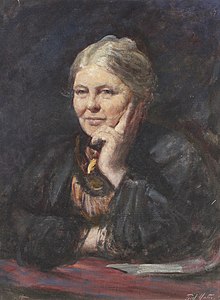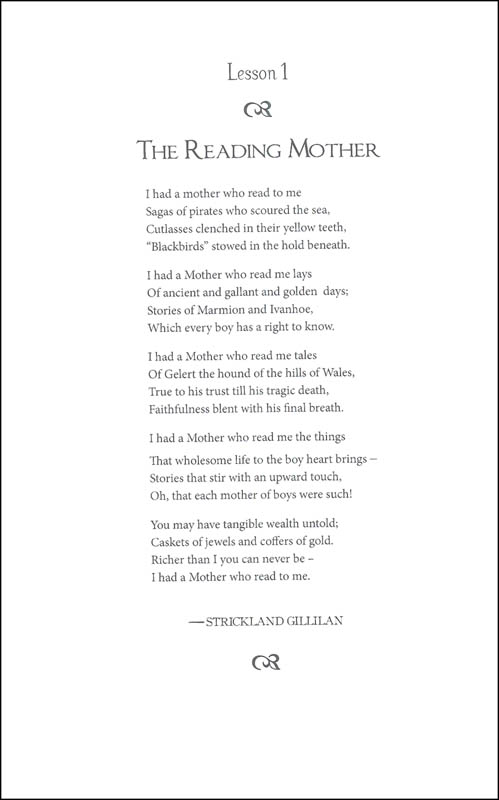
Who was Charlotte Mason?
If you have been around the homeschool community for any length of time you have probably heard of Charlotte Mason.
Charlotte Mason was an educator in England at the turn of the 20th century. She believed contrary to popular opinion and practices at the time; that children are whole persons and therefore the whole child should be taken into consideration throughout the duration of their education.
Much has been written about Charlotte Mason and her revolutionary approach to education, which I will absolutely be discussing in greater detail in the future as there is so much to say, however for the sake of brevity I will attempt to stay on topic.
For today’s post, we will be discussing living books and literature based learning.
What is a living book, or more specifically what are the characteristics or identifiers of a living book?
We will also discuss why living books and literature based learning is a beautiful, palatable, and effective way to cover a myriad of subjects with your homeschoolers and bonus, can be done for free (for those with access to the library or the internet) and thanks to audiobooks can be enjoyed during quiet time, chore time, while cooking or baking, over meals, and even in the car (or as is the case for many homeschooling families- the passenger van.)
I hope you’ll enjoy learning a bit more about living books and how literature based learning can simplify and enrich your homeschool.

What is a Living Book?
Simply put, a living book is a book that is engaging, enriching, and well written.
Living Books are often written in narrative form by a single author, who utilizes story or a conversational style of writing to present information and ideas in a way that is appealing to the reader.
Contrary to drab textbooks which are chock full of “facts” but lacking in ideas, living books as the name aptly implies, make the subject come alive.
Charlotte Mason said this:
“So much for the right books; the right use of them is another matter. The children must enjoy the book. The ideas it holds must each make that sudden, delightful impact upon their minds, must cause that intellectual stir, which mark the inception of an idea.”
Living books provoke curiosity and thought. Living books do not simply relay information that we in turn recite at some opportune time in order to satisfy inquiry of our academic prowess. Rather, living books make an impression upon the reader.
Living books do cover dates, times, locations, processes and the like; in other words the facts or academics, but they do so in such a way that appeals to the mind and the heart of the reader in that through them we are able to more deeply explore subjects.

Living Books and Literature Based Learning: A Connection Rich Way to Homeschool.
A living book is not dull, it is not “cartoonish” and it is not diluted or dumbed down for the sake of the child reader. A living book nourishes, elevates, and informs.
There are so many beautiful living books to choose from, and more are being written all the time.
The wonderfully refreshing part about some of the more modern living titles referring specifically to stories about people; past and present is that they feel more representative of a broader range of experiences and are more inclusive.
We now have the privilege of reading living books from a much greater sampling of authors, this is yet another wonderful way to appeal to the child.
Children are connection seeking so finding living books wherein they can identify with something or someone familiar to them really helps them to engage.
I hope this was helpful in your quest to determine what is and what is not a living book and will be of some assistance as you select titles and perhaps even work to build your own “living library.”
Please visit the book list tab on the blog where I will continue to add many living books.

The Impact of Living Books and Literature Based Learning.
We so enjoy reading, it’s a huge part of our homeschool. I know that every family is different and therefore has different needs and learning styles but truly for our family, the reading of beautiful living books and utilizing literature based learning, has both enriched and simplified our home education experience in such a wonderful way.
While I appreciate my open and go curriculum as much as the next homeschool mom, literature based learning truly feels like the most authentic, enjoyable, relaxed, and connection rich way for us to learn.
Out of all of our days homeschooling, the days that end with a stack of good books to be returned to the library or placed back upon our shelf, are my favorite days. I do not second guess for a moment, whether we have “done enough” on these days because I know that the fruit borne from the experience of reading, narrating, and discussing these books will be of great sustinance for years to come.
This is the power and the impact of living books and literature based learning.
When we read together, we have the opportunity to explore big thoughts, feelings, and questions in a safe environment often curled beneath a cozy blanket.
When we read together, we have the opportunity to examine our character, empathy, courage, resilience, humility, fragility, faith, and even our mortality. We discuss fears, hopes, and dreams. We adventure alongside one another.

Reading Aloud: Stay the Course and Enjoy the Adventure.
It’s always interesting to me the differing perspectives among the children and what stood out to each of them from the stories we have read.
I have learned so much about myself and my kids through reading together.
I really encourage you to find a way (if you aren’t already) to read more together as a family, even if it’s audiobooks in the car or over a meal.
Start small, build that habit of attention. Resist the urge to quiz your child on what they’ve heard or read.
Rather, start by sharing something you liked about the story, or how it made you feel. Open the dialogue but don’t be dismayed if it takes a few attempts for them to engage.
Like many things, the habit of attention where reading aloud is concerned is built incrementally over time.
Though many of us would love for our children to circle round us, sat on their bottoms, quiet and eager to listen as we read aloud, it doesn’t always look like that, and that’s ok.
I think it’s very easy to become discouraged when the picture in our mind of how something “should look” doesn’t come to fruition but I encourage you to stay the course, find a way that works for your family and enjoy the benefits of reading beautiful literature together.

Literature Based Learning: No Curriculum Needed.
Literature based learning is such a pleasant way to cover a myriad of subjects and has really helped to reaffirm in my mind just how effortlessly integrated many subjects are.
Coming from a public school background I always thought of subjects as separate but that is certainly not the case. Many books, especially living books cover a variety of subjects in a seamless fashion.
While the reading of stories and picture books may have been thought of as “fluff” before and may still be thought of this way by some, I see it as an invaluable part of my children’s education and our family culture.
I look forward to sharing great books with you all and would also love to hear of your favorite living book titles as well.
I would like to share another beautiful quote by Charlotte Mason, it’s not specific to reading living books but is just such a beautiful representation of who she was and her heart for children’s education. I adore Charlotte Mason’s approach to education. We are not Charlotte Mason purist by any means but we have great reverence for her contribution to the education of children and practice many of her principles.
Charlotte said this:
“Thought breeds thought; children familiar with great thoughts take as naturally to thinking for themselves as the well-nourished body takes to growing; and we must bear in mind that growth; physical, intellectual, moral, spiritual, is the sole end of education.“

Literature Based Learning: What the Science Says about Reading Aloud With Our Children.
We are not manufacturing products; we are stewarding hearts, minds, and souls. I can think of no better way to engage with and appeal to our children’s hearts and minds than through beautiful stories.
We know that connection is a key component to a successful education so please do not discount the value of story, of talking with your children and of training their character. If we truly want our children to be successful we know that the academics are only a part of that formula for success.
If we wish to give our children a truly holistic education, then living books and literature based learning is a wonderful way to achieve that. I think many parents shy away from reading to their children because it seems overly simplistic and “too pleasant,” like our kids need to be suffering a bit to actually be learning but this couldn’t be further from the truth. Parents also tend to stop reading to their children once their children are able to read to themselves but even after our children are proficient in reading, there are still so many benefits to our reading to them or with them.
Here is a fantastic conversation on the Read Aloud Revival Podcast between Sarah Mackenzie and Dr John Hutton of the Reading and Literacy Discovery Center at Cincinnati Children’s Hospital. Please give it a listen when you have some time, I learned so much from their discussion.
I hope this post will encourage you to carve out some space in your days to read with your children. Spread a picnic blanket in the yard, curl up on the couch, make a kid friendly Charcuterie board and let the children snack while you read. I look forward to hearing of your experiences reading aloud with your kids and how you’ve used literature based learning in your homeschools, it is a such a rich and beautiful way to learn.
Please enjoy this wonderful poem by Strickland Gillian titled, The Reading Mother.



Leave a Reply